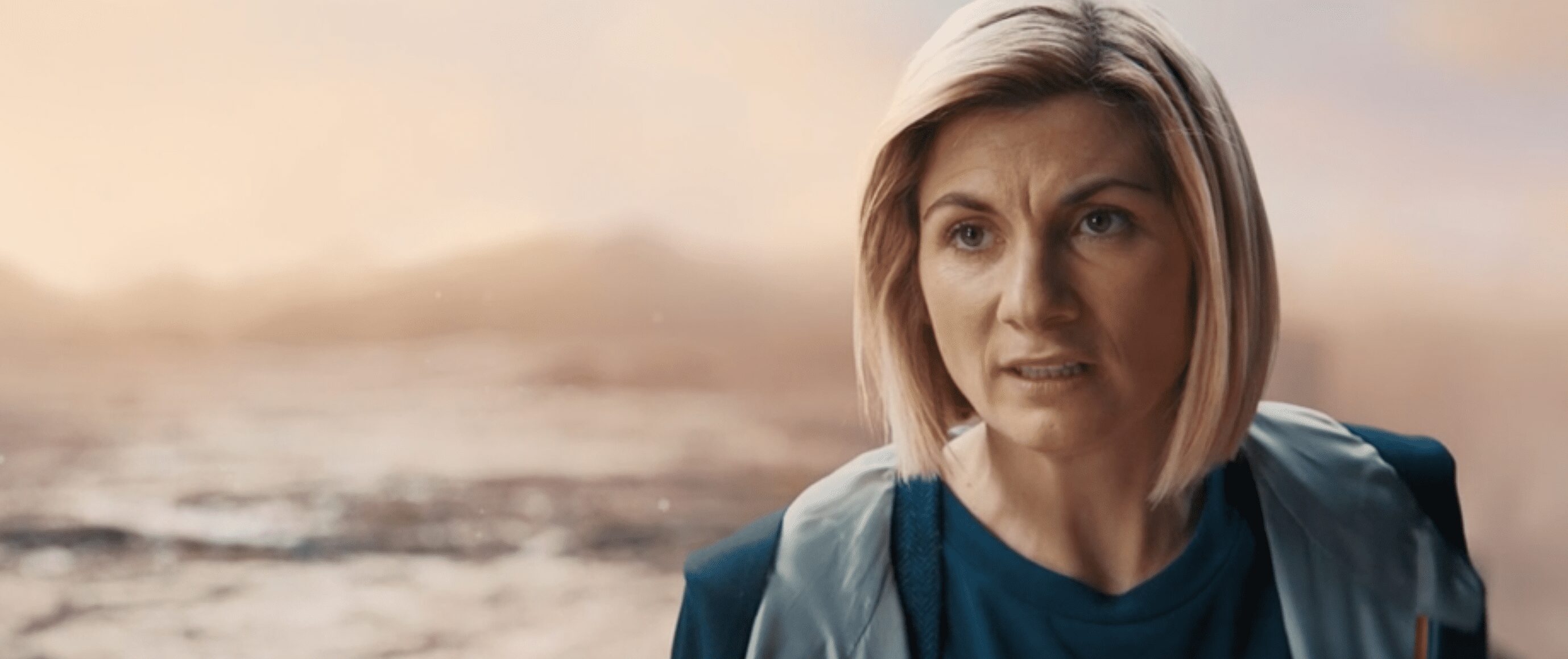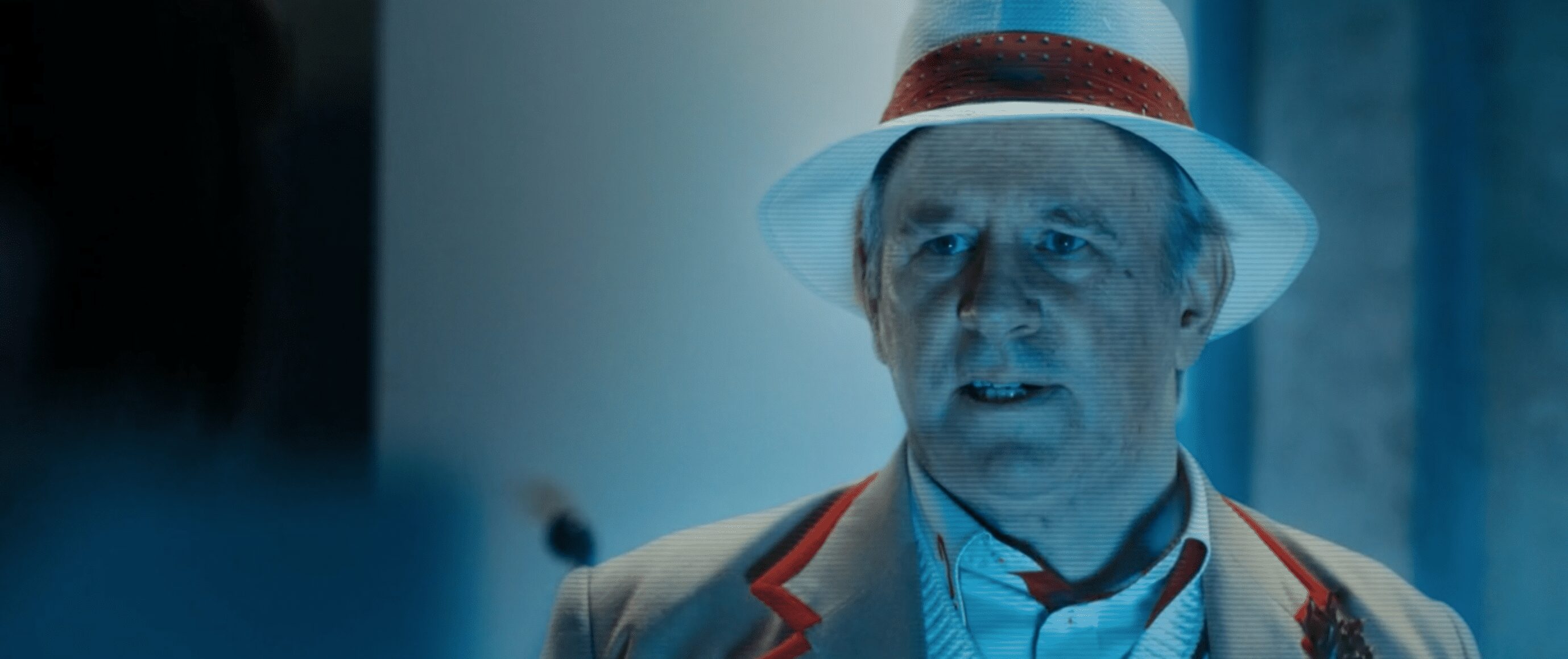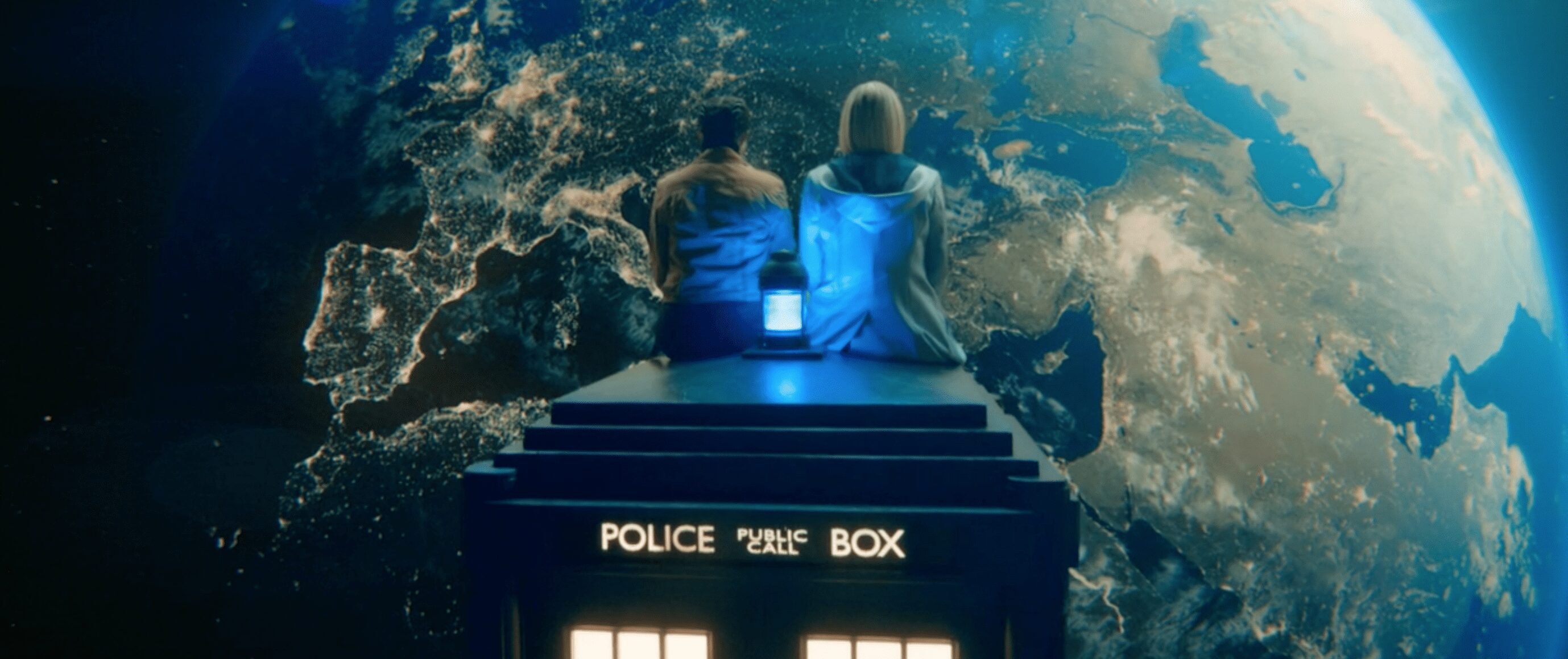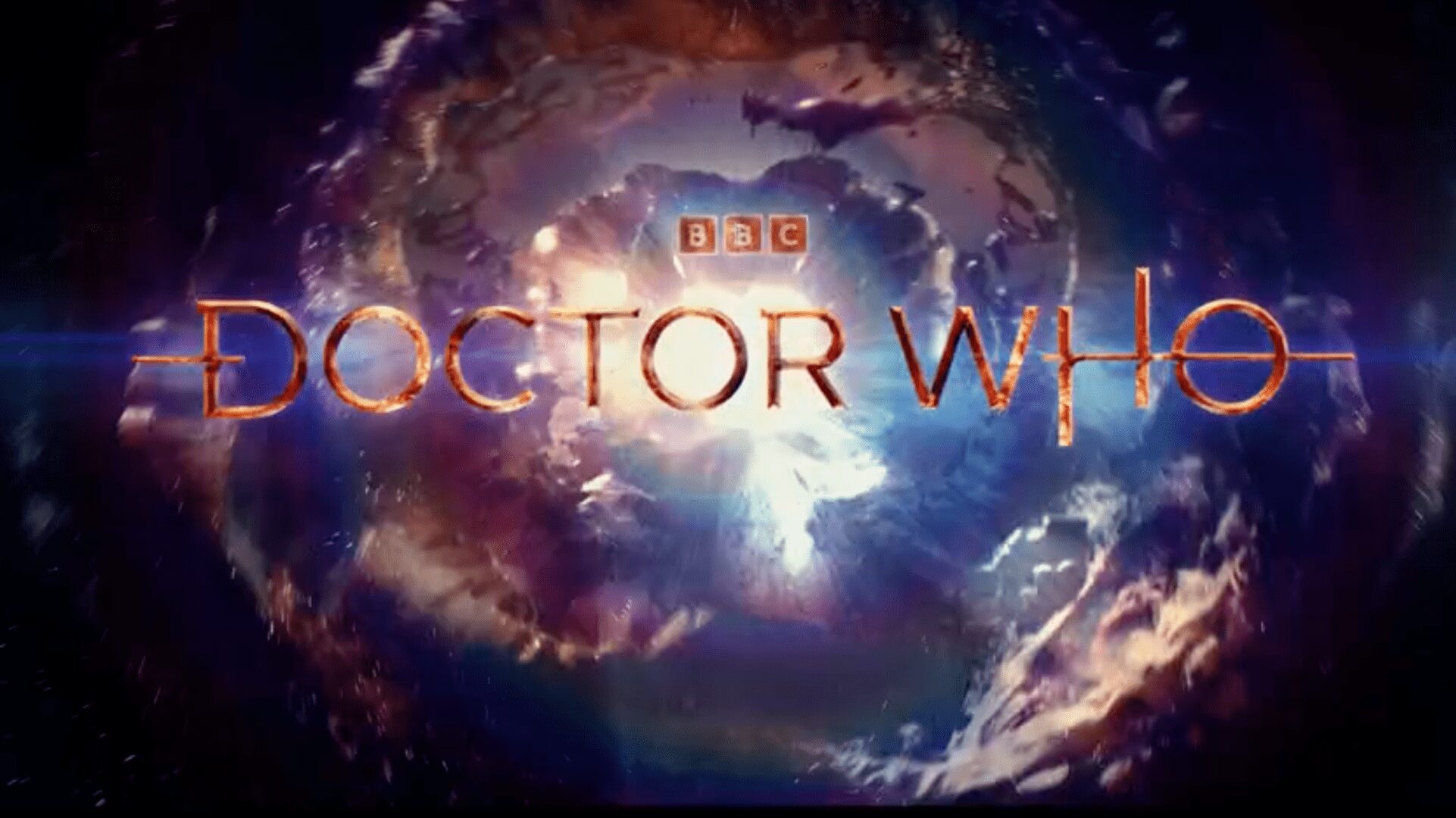Major spoilers are ahead for this review of Jodie Whittaker’s finale, “The Power of the Doctor.”
The end is near as Jodie Whittaker emerges for her final episode as the Thirteenth Doctor and the first female Time Lord in Doctor Who’s 59-year-history. With each closing chapter to every incarnation, there’s a sense of melancholy as we reflect on how far they’ve come. With Whittaker, it’s no different. I’ve been pretty vocal about Whittaker’s era, primarily for the writing. Her era has had its strong moments, and it’s had its weak moments. “The Power of the Doctor” is wedged somewhere in the middle. It had its high points, and it had its low points. This review will analyse these aspects honestly and fairly.
The story. I’ve got a page and a half of notes and find myself pausing the episode about three dozen times to massage my temples and make sense of this comically convoluted, intricate story. It involves, if you can believe it or not, Rasputin, missing paintings, seismologists, volcanoes, Daleks, Cybermasters, U.N.I.T, a wealth of cameos, mystical aliens, a planet for converting various forms of matters, and a bullet train in space. In fairness, it’s hard to become bored, but it’s easy to become confused.
What it boils down to is this. The Master’s evil scheme is to capture the Doctor and force her to regenerate into him using a conversion machine the size of a planet. On paper, it’s straightforward enough to follow – but that’s not the case as the episode unfolds. Within the first fifteen minutes of Jodie Whittaker’s finale, there’s more story to digest than we got during the whole of the Dalek time loop New Year’s special “Eve of the Daleks.”

The plot is so nonsensical and muddled it makes my brain hurt. Yet, in the interest of fairness, Chibnall has a gift to bring everything full circle, and in the end, it pays off…, just. Sacha Dhawan demonstrates his most demented interpretation of the Master yet, and if he fails to return in the next era of the series, Dhawan will be sorely missed. Disguised as Rasputin in 1916 Russia, the Master is dancing to the song of the same name by Boney M, taking after John Simm’s rendition of “I Can’t Decide” by The Scissor Sisters. In present-day Naples, the renegade Time Lord is shrinking seismologists at a conference. As mentioned earlier, the Master regenerates into the Doctor, with a costume carefully sampling the best parts of previous incarnations.
There’s also the Daleks. The tin pepper pots are back again, hiding inside volcanos around the globe, plotting to flood the world with lava. That’s the long and short of it. Daft and below Dalek standards of old. A rogue Dalek transmits a message aboard the TARDIS to ask for the Doctor’s help in destroying them, having lost faith in the Kaled cause that would upset Davros should he find out. The Cybermen (or should that be Cybermasters) are hijacking bullet trains and taking over a UNIT HQ led by Kate-Lethbridge Stewart. Ashad is back, perhaps one of the best Doctor Who villains in recent years. Patrick O’Kane’s performance is terrifyingly perfect. The actor reprises his role as the half-converted Cyberman after being shrunk by the Master, quite disappointingly, during the Series 12 finale more than two years ago.
We’ve got Tegan and Ace taking up arms against Ashad and his forces in UNIT HQ, and a tense standoff between Kate and the half-converted Cyberman are two key highlights from this particular plot thread. Seeing as it is Doctor Who, and the series approaches its 59-year-anniversary (a month from yesterday), we need to talk about those cameos. Yes. Not one, not two, but six incarnations. Adding Whittaker to that, the total reaches seven, making it the most incarnations to appear in series history, topping the 20th-anniversary special, “The Five Doctors.”

With Whittaker’s Doctor forced to regenerate and Dhawan’s Master assuming her place, the Thirteenth incarnation finds herself in limbo, a place Time Lords find themselves during the regeneration process. There, Whittaker meets various versions of the iconic Time Lord. The first surprise comes as David Bradley makes an appearance. The veteran Harry Potter actor stepped in during Peter Capaldi’s finale as the late William Hartnell’s First Doctor. At first, it’s easy to imagine the budget only stretched for Bradley, meaning there’d be no way they could bring back even more.
Then we’ve got Colin Baker’s Sixth Doctor, Peter Davison’s Fifth, Sylvester McCoy’s Seventh, and Paul McGann reprising his role as the short-lived, brilliant Eighth. Plus, there’s an appearance from Jo Martin as the Fugitive Doctor later in the episode. If we’re not looking at this from a chronological perspective, the final count is eight. The next few minutes following the cameos were filled with intense fangirl squealing as I located my jaw that fell to the floor. More gratifying still are the interactions between Tegan, Ace, and the variations of the Doctor.
After 38 years since Tegan was plonked back on Earth at the end of 1984’s Resurrection of the Daleks, her attitude toward the Doctor is frosty. It’s the ever-familiar dilemma companions face. It’s how they come to terms with a life post-Doctor, seemingly abandoned and forgotten once the Time Lord flies away in the TARDIS. There’s a poignant moment as Tegan speaks to an AI embodiment of Davison’s Fifth Doctor. He hasn’t forgotten any of them, he says. When she asks him what she’s thinking in the midst of the Cyberman invasion, Davison follows it up with a name drop: Adric.

Later, Sophie Aldred’s Ace meets a vision of Sylvester McCoy’s Seventh Doctor, motivating his companion with some moral support as she prepares to fight the Daleks in a Bolivian volcano. As you do. Then in the dying moments of the episode, as Whittaker’s Doctor looks out at one last sunrise before regenerating, a strange thing happens. David Tennant returns as the tenth incarnation, assuming the role of the Fourteenth before Ncuti Gatwa’s appointment as the Fifteenth next Christmas.
In the context of the story, the cameos are “vestiges” of the Doctor’s consciousness, similarly to Rose Tyler’s appearance in the 50th anniversary. The cameos are so wholesome and service the fans in the right way. From McCoy’s facial expressions, David Bradley’s eerily accurate impersonation of the late Hartnell, and McGann’s refusal to wear robes like the others, it’s all so perfect. Tennant’s reprisal as the Tenth Doctor in the final seconds of the episode is brimming with nostalgic throwbacks (his teeth) and such high promise for the three specials scheduled in November 2023 for Doctor Who’s 60th anniversary.
John Bishop makes a final, fleeting appearance as Dan. In a dazzling opening sequence set aboard a speeding bullet train in space, Bishop’s Liverpudlian everyman realises his own mortality in a firefight with Cybermen, opting to return to Earth and get back to his date with Diane. He was a short-lived companion, but Bishop gave an honest, humble performance throughout, despite my earlier reservations about his casting. Sadly, it feels like Chibnall recognised Dan had little to offer for the story, but the conclusion to his arc was appropriate. His final goodbye to Yaz was surprisingly moving.

The Power of the Doctor is a nonsensical, extravagant finale that furnishes its audience with fan service, and delivers a worthy send-off for Jodie Whittaker’s Time Lord. For more Doctor Who content, there’s an easter egg breakdown from The Power of the Doctor that’ll cover some of the finer details that you may have missed on first viewing.

